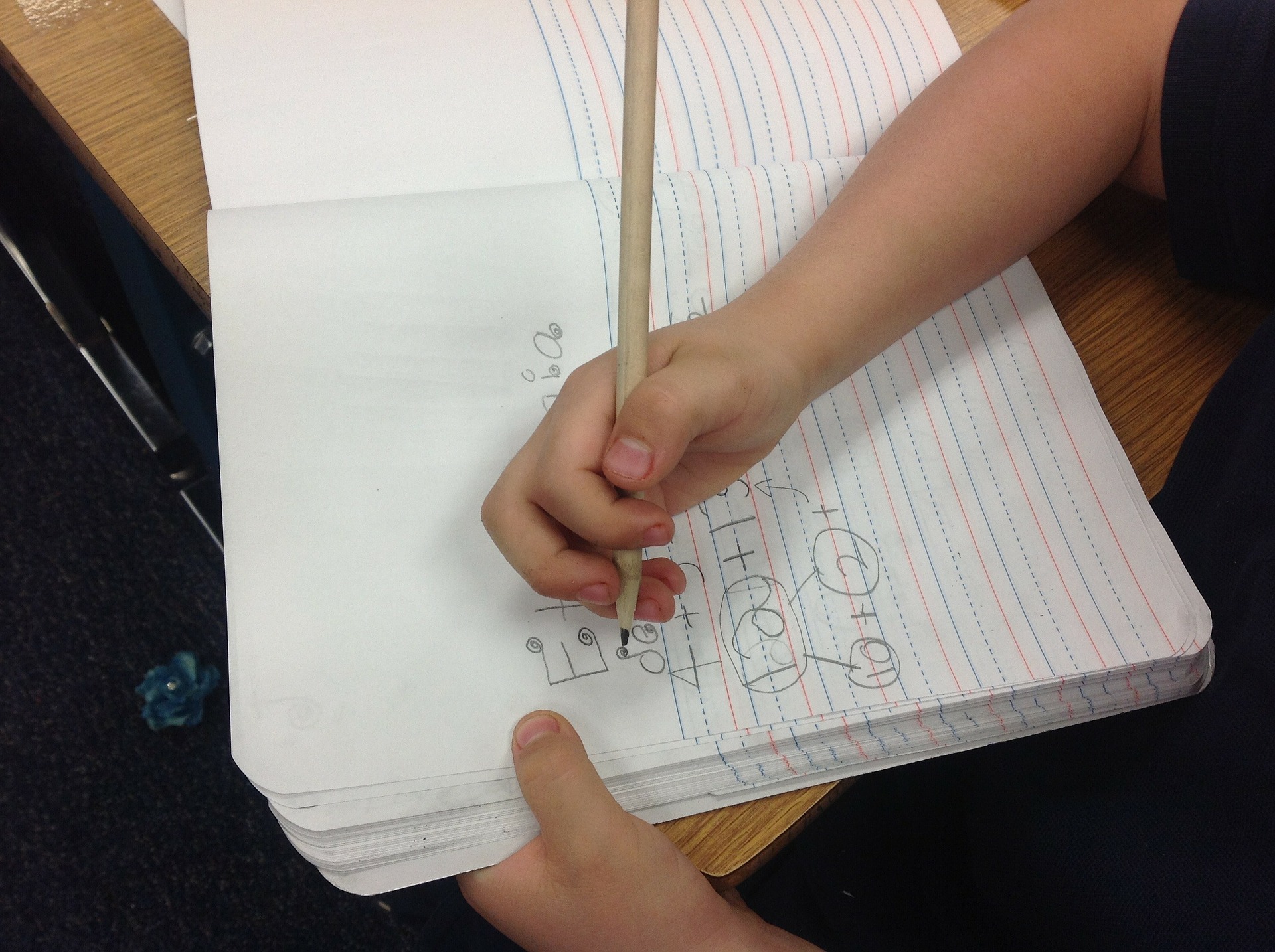Why Teaching Handwriting is Important: Takeaways From New Research
Our Q&A about the importance of handwriting for learning with Audrey van der Meer, a professor at the Norwegian University of Science and Technology.

Handwriting helps children learn, says Audrey van der Meer, a professor at the Norwegian University of Science and Technology and co-author of a recent study examining brain activity in children who are writing by hand.
van der Meer has long studied the ways handwriting seems to increase brain activity and believes writing by hand should be prioritized in education systems throughout the world.
For her most recent study, van der Meer and her colleagues used EEG monitoring to study how brain activity differed between 16 adults and 16 school-age kids when they were handwriting in cursive and typing on a keyboard. The study demonstrates that when participants were writing by hand their brains were more primed for learning. This builds on previous research with similar findings.
The use of pen and paper gives the brain more “hooks” to hang memories on, says van der Meer. She discusses her recent research and the importance of handwriting in general.
T&L: What led you to start researching the difference between writing by hand and typing?
Audrey van der Meer: We know from our developmental research with babies and young children that we have a brain – not to feel or think – but to help us to behave adequately in the environment. So the more we remove movements from our daily tasks, the less we use our brain for what it has evolved to be best at.
What are some of the ways you found handwriting made children learn better?
We show that the brain behaves differently when writing by hand as opposed to when typing on a keyboard. First of all, writing by hand involves much larger parts of the brain. Producing letters by hand requires intricate finger movements that are different for all the letters we write. In contrast, the movements involved when typing on a keyboard are very simple and, more importantly, they are the same for every key you press. Also, when writing or drawing by hand the senses are much more involved.
In regard to your recent handwriting study, you’ve talked about how using a pen and a paper gives the brain more "hooks" to hang knowledge on. Why is that the case?
When large parts of the brain are involved in a given task, the brain needs to communicate relevant information between these different active parts of the brain. This is done by neural oscillations, where neurons in different parts of the brain oscillate in and out of sync at different frequencies. Research has found that oscillations at specific frequencies in the sensorimotor areas of the brain put the brain in a state that facilitates learning and remembering.
Tools and ideas to transform education. Sign up below.
What are some changes educators might consider making to how they teach based upon your study and previous research on the benefits of handwriting?
Please continue to teach the skill of handwriting, because it stimulates the brain. Even though it is difficult for a 6-year-old to produce letters by hand on paper, we have shown that it is excellent training for the brain. It also promotes letter recognition in young children.
Of course, when writing an essay it is more practical to use a laptop, but when taking lecture notes it is beneficial to use a pen and to practice visual notetaking because it improves conceptual knowledge. Instead of noting down everything the lecturer says, pupils should only write down keywords supplemented with small drawings, boxes, arrows, underlining etc.
When using a keyboard, it is possible to type so fast that you can note down, almost blindly, everything the lecturer says. But when taking notes by hand, you have to process the incoming information and link it to concepts and knowledge you already have, before writing down the essence. This way, you make the material your own, so to speak. And incidentally, this also explains why using a mate’s lecture notes does not seem to work.
Fascinating! Did you differentiate between cursive and regular handwriting?
We studied cursive handwriting, but we are convinced that the central issue here is to make intricate hand movements. So printing block letters will be equally beneficial for the (developing) brain.
Anything else you'd like to add about handwriting?
Young children nowadays spend so much time behind a screen that they hardly know how to hold a pencil when they start school. Coloring, laying puzzles, beading, drawing, and writing by hand all require fine motor skills and precise head-eye and eye-hand coordination, and should be encouraged at home and in kindergarten from a young age. And writing in Japanese and Chinese is almost like drawing, while doing math on a keyboard is very cumbersome.
Erik Ofgang is a Tech & Learning contributor. A journalist, author and educator, his work has appeared in The New York Times, the Washington Post, the Smithsonian, The Atlantic, and Associated Press. He currently teaches at Western Connecticut State University’s MFA program. While a staff writer at Connecticut Magazine he won a Society of Professional Journalism Award for his education reporting. He is interested in how humans learn and how technology can make that more effective.

